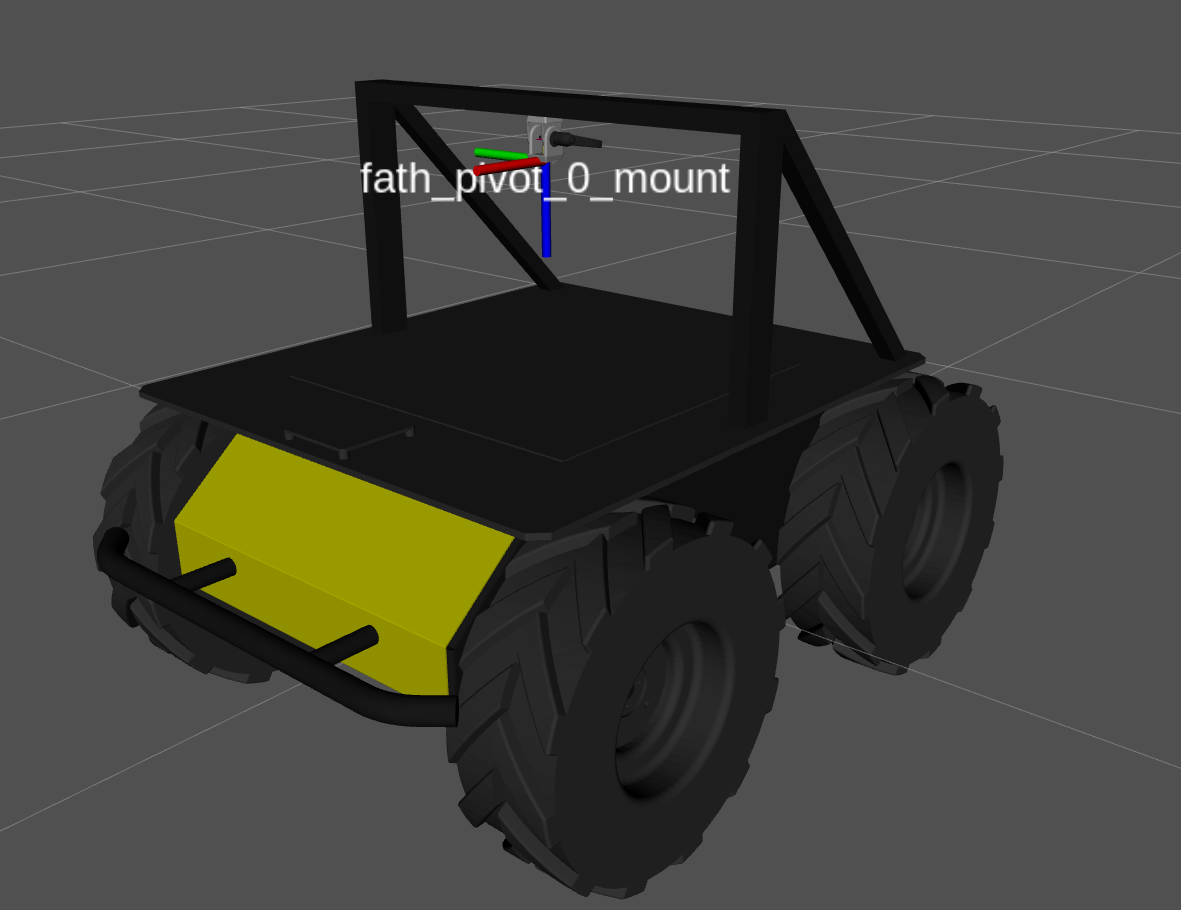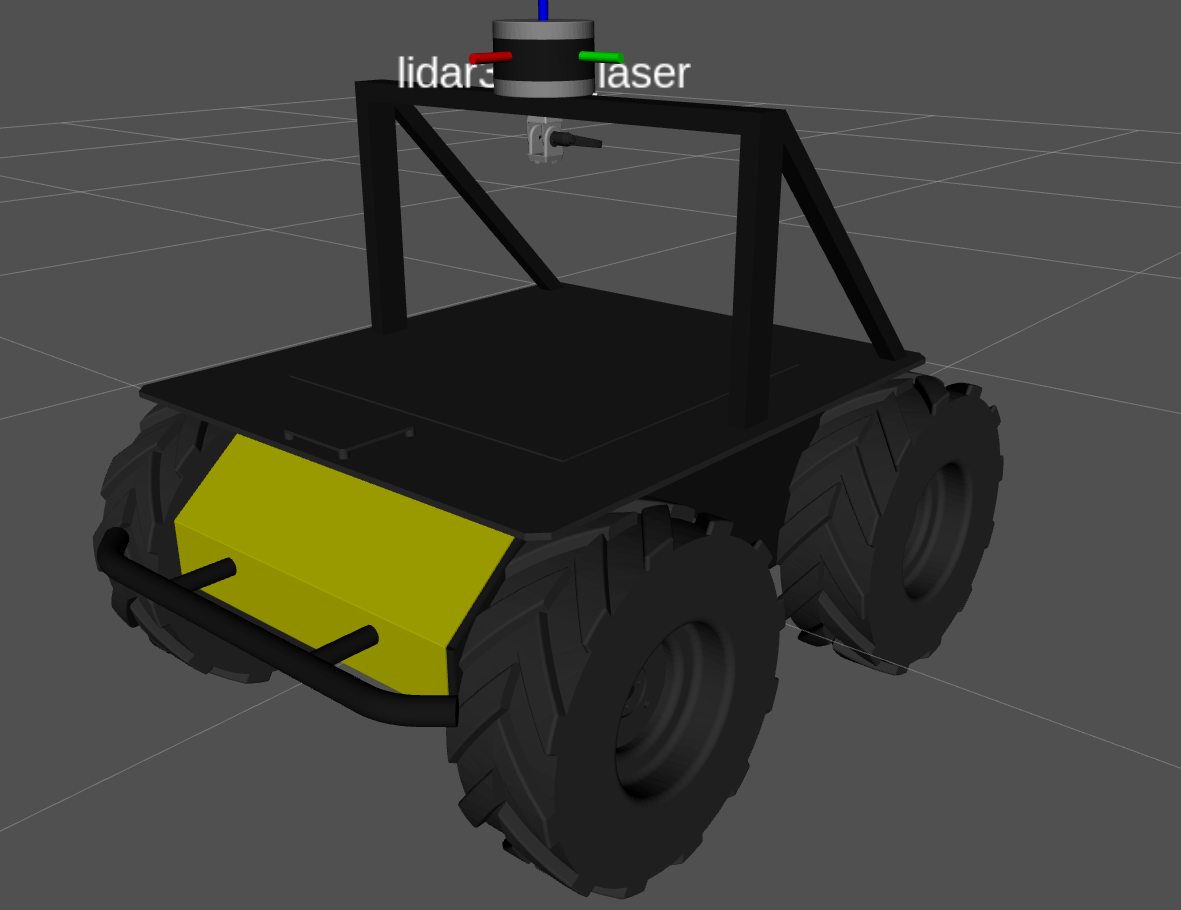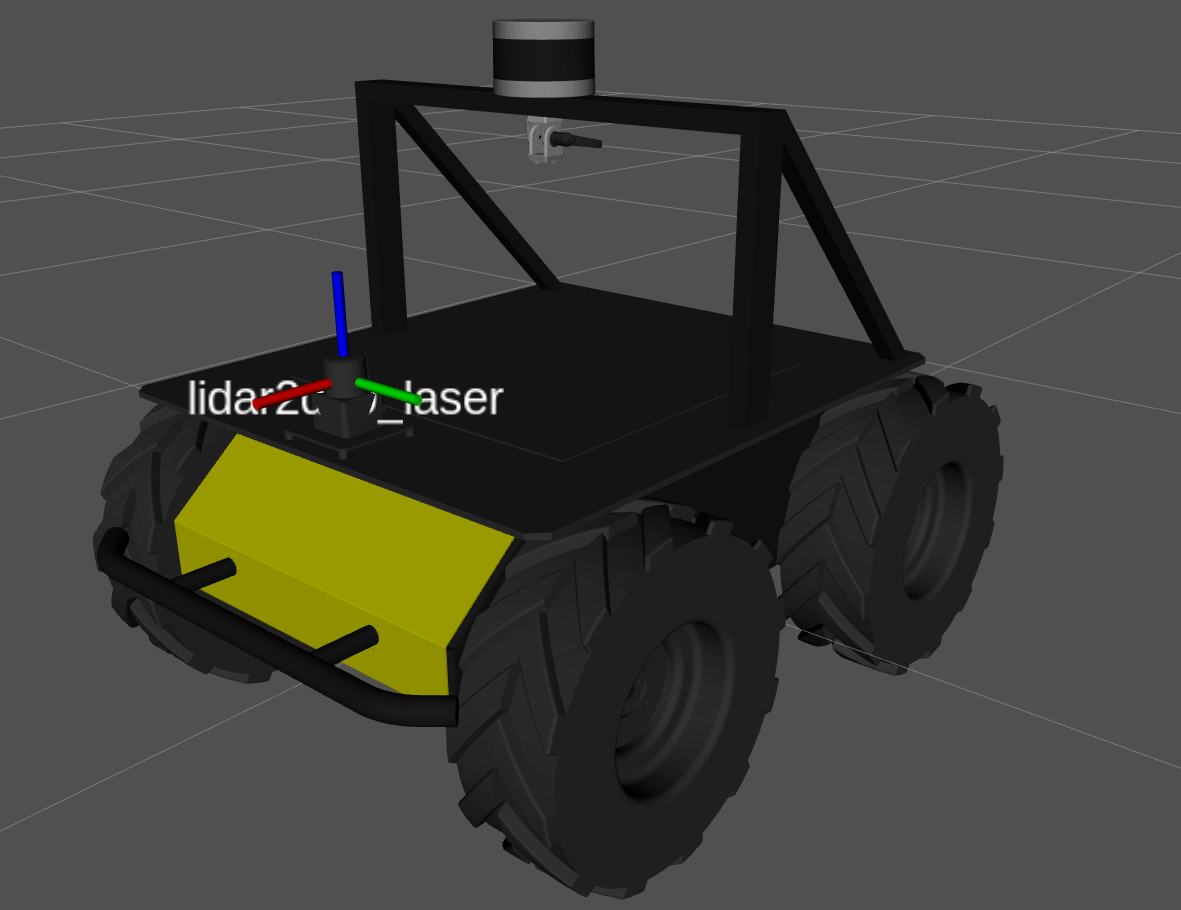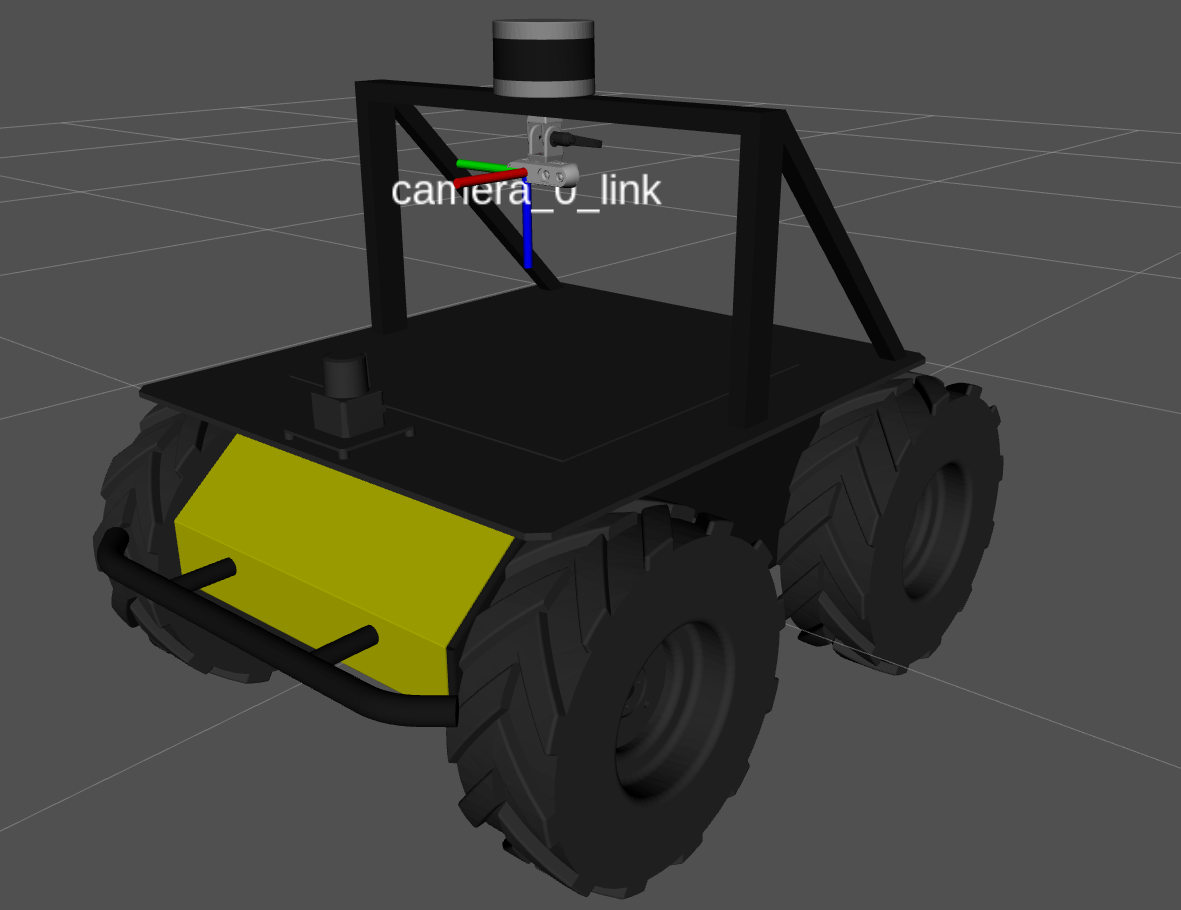Sensors
At Clearpath, we have been migrating our large inventory of tested sensor drivers from ROS 1 to ROS 2.
Sensors are split up into sections:
- Cameras publish sensor_msgs/Image messages
- GPS publish sensor_msgs/NavSatFix messages
- IMU publish sensor_msgs/Imu messages
- LiDAR 2D publish sensor_msgs/LaserScan messages
- LiDAR 3D publish sensor_msgs/PointCloud2 messages
In ROS 2, sensors use a ros_parameters YAML that contains all launch parameters for the driver node. To facilitate complete customization of these node parameters, the ros_parameters section, under every sensor entry, serves as a way to pass those key-value pairs to the corresponding node.
By default, we pass tested parameters that are used on Clearpath robots.
Sample
Sample A200 Sensors Section

In this sample, we first add the velodyne_lidar to the sensor_arch_mount by simply changing the parent link.
lidar3d:
- model: velodyne_lidar
urdf_enabled: true
launch_enabled: true
parent: sensor_arch_mount
xyz: [0.0, 0.0, 0.0]
rpy: [0.0, 0.0, 0.0]
ros_parameters:
velodyne_driver_node:
frame_id: lidar3d_0_laser
device_ip: 192.168.131.25
port: 2368
model: VLP16
velodyne_transform_node:
model: VLP16
fixed_frame: lidar3d_0_laser
target_frame: lidar3d_0_laser

Next, we will add a hokuyo_ust to the bracket we added earlier. Since that is the first bracket, then it's mounting location will be: bracket_0_mount; setting the parent link of the sensor, we get:
lidar2d:
- model: hokuyo_ust
urdf_enabled: true
launch_enabled: true
parent: bracket_0_mount
xyz: [0.0, 0.0, 0.0]
rpy: [0.0, 0.0, 0.0]
ros_parameters:
urg_node:
laser_frame_id: lidar2d_0_laser
ip_address: 192.168.131.20
ip_port: 10940
angle_min: -2.356
angle_max: 2.356

For the final step, we will add an intel_realsense to the fath_pivot mount that we added. Because it is the first fath_pivot, it's mounting location will be: fath_pivot_0_mount; setting the parent link of the sensor:
camera:
- model: intel_realsense
urdf_enabled: true
launch_enabled: true
parent: fath_pivot_0_mount
xyz: [0.0, 0.0, 0.0]
rpy: [0.0, 0.0, 0.0]
ros_parameters:
intel_realsense:
camera_name: camera_0
device_type: d435
serial_no: '0'
enable_color: true
rgb_camera.profile: 640,480,30
enable_depth: true
depth_module.profile: 640,480,30
pointcloud.enable: true

Leaving the other sections empty, leaves us with the full sensors section:
sensors:
camera:
- model: intel_realsense
urdf_enabled: true
launch_enabled: true
parent: fath_pivot_0_mount
xyz: [0.0, 0.0, 0.0]
rpy: [0.0, 0.0, 0.0]
ros_parameters:
intel_realsense:
camera_name: camera_0
device_type: d435
serial_no: '0'
enable_color: true
rgb_camera.profile: 640,480,30
enable_depth: true
depth_module.profile: 640,480,30
pointcloud.enable: true
gps: []
imu: []
lidar2d:
- model: hokuyo_ust
urdf_enabled: true
launch_enabled: true
parent: bracket_0_mount
xyz: [0.0, 0.0, 0.0]
rpy: [0.0, 0.0, 0.0]
ros_parameters:
urg_node:
laser_frame_id: lidar2d_0_laser
ip_address: 192.168.131.20
ip_port: 10940
angle_min: -2.356
angle_max: 2.356
lidar3d:
- model: velodyne_lidar
urdf_enabled: true
launch_enabled: true
parent: sensor_arch_mount
xyz: [0.0, 0.0, 0.0]
rpy: [0.0, 0.0, 0.0]
ros_parameters:
velodyne_driver_node:
frame_id: lidar3d_0_laser
device_ip: 192.168.131.25
port: 2368
model: VLP16
velodyne_transform_node:
model: VLP16
fixed_frame: lidar3d_0_laser
target_frame: lidar3d_0_laser